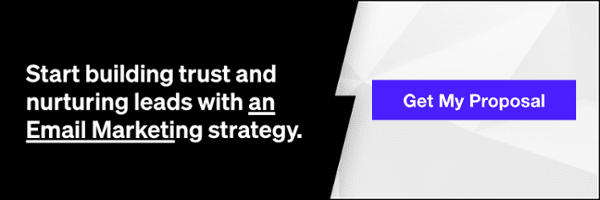When an email bounces back and no one is around to read it, does it make a sound?
Other than the dismal “ping” of a failed delivery, probably not. Both “hard” and “soft” bounce emails fall on deaf ears—but depending on which barrier you’re up against, you may still have room to revise and re-relate your message.
Here, we’ll outline the difference between hard bounce vs soft bounce email marketing and provide tactics to retain your customers, net new leads, and keep your global strategy consistent with emerging email marketing trends.
Hard vs Soft Bounces, Defined
There are several reasons why an email delivery might not go through, and each case may be designated in one of two categories: hard bounces or soft bounces.
Hard Bounces
In short, hard bounces are the “hard no” of emails—the closest you’ll come to meeting a brick wall in email marketing. There are 3 main reasons for a hard bounce email:
- The recipient has an invalid email address
- The addressee has your sending address blocked
- Your email ran up against a spam filter or firewall at its destination address
In general, hard bounce emails offer little recourse to reroute your message towards its original recipient.
Soft Bounces
Soft bounces are a little less final. There’s more wiggle room to circle back and find a workaround.
The most common explanations for soft bounce emails include:
- Addressee’s mailbox is at capacity
- Addressee’s account has been suspended
- Integrated media or attached files are too big
- Mail server malfunction
- Your emails have been marked against a spam filter
Everything from withholding an unsubscribe button to overusing the Caps Lock key in your subject lines can set off Spam filters, and with legislation like the CAN-SPAM Act you’ll need to ensure your messaging meets federal standards before petitioning entry to a customer’s inbox.1
Spam is the ultimate inbox bouncer, which makes it critical to know how to design your emails so they read as clean and savory—to your readers, but also to internet service providers (ISPs).
To maintain brand credibility (and avoid tens of thousands of dollars in legal fees), always partner with a credible digital marketing agency to help your email marketing campaign get off the ground and stay out of the junkyard.
hbspt.cta.load(2662469, ‘ebdeb703-955c-451c-a2ff-d852fec80a8b’, {“region”:”na1″});
Hard vs Soft Bounces: The Bottom Line
Here and there, bounced emails (both hard and soft) are to be expected. So long as your email bounce rate hovers around 2%, they’re just a drop in the bucket when it comes to the watershed impact that a strategic email marketing service can have for your brand.
However, if your bounced email tally builds over time, the effect can slow your entire marketing engine. Too many rebounds, and your company risks getting blacklisted by heavyweight ISPs like Google and Yahoo—which means your messages won’t make it into your subscribers’ inboxes at all.
Stakes as high as these make it vital to adopt a rigorous protocol when your analytics flag a boomerang message. So, let’s find out the best practices for handling them efficiently.
How to Handle Bounced Emails
You have two main objectives when confronted with bounced emails:
- Cut your losses – If an email message doesn’t get delivered due to security settings or an invalid address, delete the address. Trimming obvious dead-ends will abate congestion, keep your data current and legible, and ensure you know where to try new marketing solutions to keep your public poised for engagement.
- Lean into analytics – Whether you’re in the process of weeding out invalid emails or consistently completing conversions through your emails, harnessing analytics is essential for growth and maintaining a robust ROI. Data from past and ongoing campaigns will keep you on the right track with engagement, from knowing the types of content that yields click-throughs to the products your public wants more of.
Soft bounces leave the door ajar for you to make contact—but always try to revise your strategy before a second bid.
A high soft bounce rate may mean your copy is “spammy” or that assets you’ve included are too dense to send (and too hefty for easy mobile viewing). Before you pitch pebbles at their window a second time, identify the issue and rectify it to avoid hemorrhaging potential customers.
Bounced Emails: The Silver Lining
Here’s the thing about bounced emails: they can offer invaluable information on your marketing strategy whether or not they stick the landing.
Both hard and soft bounce emails feed into what’s known as your email marketing bounce rate. This quotient compares two values:
- Emails sent
- Emails delivered
When read in conjunction with other key email marketing metrics, you can cull some vital data on how smoothly your email campaign is running and where it could use an oil change.
Here are some companion variables to interpret alongside your bounce rates and fine-tune your approach:
- Email list growth rate – In the world of email marketing, you’ll win some and you’ll lose some—but your win-some rate should consistently outweigh the latter. Some lapses are organic (usually due to a change of address), while others can be attributed to static incentives, such as email coupons, or customers who opted out after securing a deal. Whatever the cause, aim to keep your new subscriber rate up to make up for the losses all databases inevitably incur.
- Share rate – With the meteoric growth of content marketing, the sharability of your messaging is crucial. Share buttons are an invaluable tool to make native in your emails. They reveal the success of current campaigns and identify untapped digital districts where you can make headway. Most analytics are conservative on this front, tallying only the “shares” made directly from your email (as opposed to shares on social media).
- Click-through rate – Every email you send should contain at least one opportunity for reader engagement—a call to action (CTA) that opens the door to your latest content piece, blowout sale, or subscriber perk. Your click-through rate refers to the portion of recipients who followed the lead you provided out of the total number of successfully delivered emails.
- Conversion rate – Where clickthrough measures engagement, conversions reflect the ratio of recipients who followed through on the desired CTA. Making a purchase, completing a survey, or sharing a post with hashtag #lovethisbrand are all examples of conversion goals, which will be unique to your company and the milestones you’re aiming to clear.
There’s no question that email marketing analytics can be a rich resource, but they tend to yield a dense amount of data that can be difficult to sift through and interpret.
To reap the full benefits of the intelligence they offer, always work with a partner who can crunch the numbers for you and help you translate that intelligence into meaningful, measurable actions you can take to pivot where necessary.
How To Optimize Your Email Marketing Strategy
Tech is perpetually evolving, which means the email strategy you spearheaded last year won’t necessarily be its sharpest amid the coming waves of marketing trends. Your strategy for staying on top of these metrics, including your email bounce back rate, must be honed against a stone that keeps getting nosed uphill.
With that, let’s take a look at three major currents forecasted to make landing with the next generation of email marketing.
#1 Email Gets Personal
In 2019, reports showed that emails with customized subject lines yielded around 50% more opens than generic ones.2 In 2022 and beyond, thanks in large part to AI, the personalizing trend is only going to get bigger.
Filtering your hard and soft bounces is phase one. With the customization trend, your brand will have even finer ways to sort your email lists using tactics like:
- Assessing hot, warm, and cold leads
- Identifying individual consumer preferences
- Rewarding engaged, consistent customers
- Timing emails for maximum engagement across time zones
As tech continues to march forward, expect more and more ways to connect with your public one-on-one.3
#2 The Medium is the Message
Emails aren’t just vehicles for purveying your product or your content. Where we’re headed, emails are the content.
Interactivity and gamification are steadily transforming every precinct of the digital sphere, and, when done right, emails don’t just invite your customer into the world of your brand—they integrate them.
Case in point: the burgeoning popularity of Buzzfeed-style quizzes and surveys. These quizzes and surveys are essential when it comes to B2B email marketing. Not only can they help you harvest game-changing information about individual recipient preferences, but they foster genuine connections with your base and offer more instructive insights into how to tailor-make your content to enhance their lives within and beyond your brand.
#3 The Message is Mobile
Emails are artfully-plotted breadcrumbs leading to a portal. And because nearly 73% of internet users will solely use their phones to access the internet, that portal doesn’t just need to be mobile-friendly—it needs to be mobile-seamless.
Strategic email campaigns should be built for mobile legibility as well as mobile interactivity. Without the proper design team in place, it’s all too likely a reader may bounce out of your email of their own accord. All mobile-friendly emails should include:
- Ahead-of-the-curve creative
- Incisive, shrewd, SEO-informed copy
- Polished social integration
- Sophisticated analytics
Lastly, all emails should lead readers to a landing page curated with precision to reflect your current and evolving brand identity. For that, you’ll need another set of eyes, hands, and humans—which is where we come in.
Stick The Landing with Power Digital
Identifying your hard vs soft bounce email marketing strategy is just one branch of your marketing tree. To keep going (and growing) in the right direction, you’ll need a skillful partner and digital marketing agency who can identify your pain points and provide shrewd, creative approaches to keep current subscribers rooted and new leads coming down the funnel.
Whether you’re looking to bounce back from an email initiative that faltered or are brainstorming fresh ways to keep your base connected, partner with Power Digital to streamline your assets and grow your brand.
Sources:
- Federal Trade Commission. CAN-SPAM ACT: A Compliance Guide for Business. https://www.ftc.gov/tips-advice/business-center/guidance/can-spam-act-compliance-guide-business
- Oberlo. 10 Email Marketing Statistics. https://www.oberlo.com/blog/email-marketing-statistics
- CoFounder. The Top 10 Email Marketing Trends to Look Out for in 2022. https://www.cofmag.com/2021/10/the-top-10-email-marketing-trends-to-look-out-for-in-2022/
The post Hard Bounce vs Soft Bounce Email Marketing: What’s the Difference? appeared first on Power Digital Marketing.
Article From: "Power Digital" Read full article
 SERPCOM is a full-service Boston digital marketing agency focused on improving online visibility, increasing traffic, raising revenue and providing SEO services.
SERPCOM is a full-service Boston digital marketing agency focused on improving online visibility, increasing traffic, raising revenue and providing SEO services.
SEO-first: A fundamentally better approach to online marketing.
Digital Marketing | SEO | Web Design & Development | Search Engine Marketing

SERPCOM is a full-service Boston digital marketing agency focused on improving online visibility, increasing traffic, raising revenue and providing SEO services. SEO-first: A fundamentally better approach to online marketing.
Digital Marketing | SEO | Web Design & Development | Search Engine Marketing
SERPCOM is a full-service Boston marketing agency focused on improving online visibility, increasing traffic, raising revenue and providing SEO services for leading brands.
Maximize the value of your website and turbo charge your online marketing efforts with SERPCOM. Call or click the button and start making the web work for you.
Just click on the Phone Number to dial on your phone:





